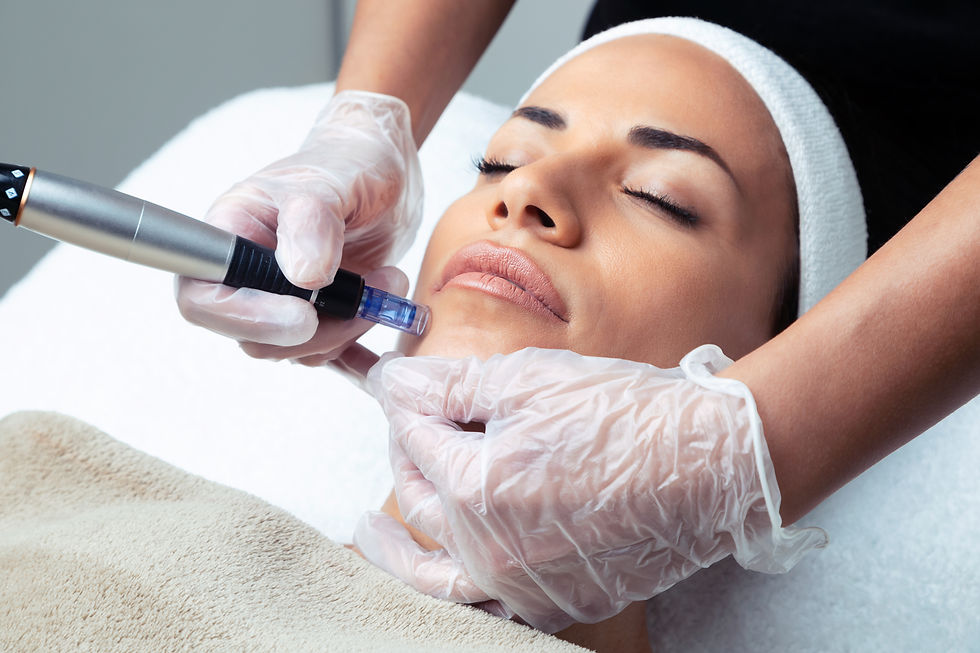The OCM-Oil Cleansing Method
- shauna313
- Jun 4, 2015
- 3 min read
The OCM (Oil Cleansing Method) has become popular among pinterest users and naturalists recently because science says that “like dissolves like.” In this scenario, oil dissolves oil.
Instead of the traditional cleansing with soap and water, you can take the oil on dry skin (we’ll get into what kind of oil later) and massage it into the face, getting into every crease and crevice for approximately 2 minutes. Then, take a warm damp microfiber towel to steam your face, leaving it on until room temperature. Rinse the towel and wipe off any excess oil.
This method is supposed to replace the oil in your skin, leaving it feeling super soft and smooth. The OCM may work for some people especially those who have sensitive or dry skin but IT WILL NOT WORK FOR EVERYONE. I’ve seen numerous posted about people with acne who are on the OCM and at the beginning the acne breakouts are really bad. For some, their skin got better but for most it turned into cystic acne or became worse.
My theory on why OCM does NOT work for acne prone skin: Acne is caused by a bacteria that lives deep in the skin’s follicles/pores called Propionibacterium acnes. The P. acne use sebum (oil) as their main source of energy and nutrients. When there is an excess of oil production or a blockage of the follicle/pore the P. acne bacteria will GROW and MULTIPLY!
Ok. Ok. I know, I just blew your mind. Let me repeat that so you completely understand. The bacteria that causes acne feeds on oil and when you clean your face with OIL, you are FEEDING the bacteria! Whoever came up with the OCM must not have had acne.
I completely understand that like dissolves like and oil dissolves oil. Some may argue that the OCM is dissolving the old oil and replacing it with fresh, new oil. Let’s be clear, oil is STILL oil and oil is STILL feeding the P. acne bacteria.
Now, let’s talk about what kind of oils are being used with the OCM! A common ratio is to use 50% extra virgin olive oil and 50% castor oil. A larger amount of castor oil if you have more oily skin is recommended because it’s supposed to draw things out. Other oils that are commonly used are jojoba oil, sweet almond oil, coconut oil, rosehip seed oil and grapeseed oil. I googled “comedogenic ratings” (pore-clogging ratings) to see how comedogenic these oils are. On a scale of 0-5, 5= highly pore-clogging, 0= not pore clogging. Here’s how they rate: Castor oil- 1, Olive oil- 2, Jojoba oil- 2 (if sulfated, 3), Coconut oil- 4, Sweet Almond oil- 2, Rosehip oil- 1, Grapeseed oil- 2, Hazelnut oil- 2, Evening primrose oil- 2. (View more here) Let’s recap, not only are you feeding the bacteria with oil but the oil is more than likely clogging your pores. As I said earlier, the P. acne bacteria will grow and multiple with a blockage or the follicle/pore, meaning the clogged pores are allowing the P. acne bacteria to grow and multiply.
One last thing! Some will argue that by adding essential oils such as tea tree essential oil, it will kill the P. acne bacteria. First of all, Tea tree oil may be irritating to some people so a test spot is recommended. Second, although tea tree oil is known for its antibacterial properties there are no known studies to prove that it kills the P. acne bacteria specifically.
Have you tried this method? Did it work for you? If you have any questions, comments or feedback about this post I’d love to hear from you!
Comment Below or Email me directly: Kirstie@CorrectiveSkincareLA.com or book an appointment with me in Santa Monica www.CorrectiveSkincareLA.com




Comments